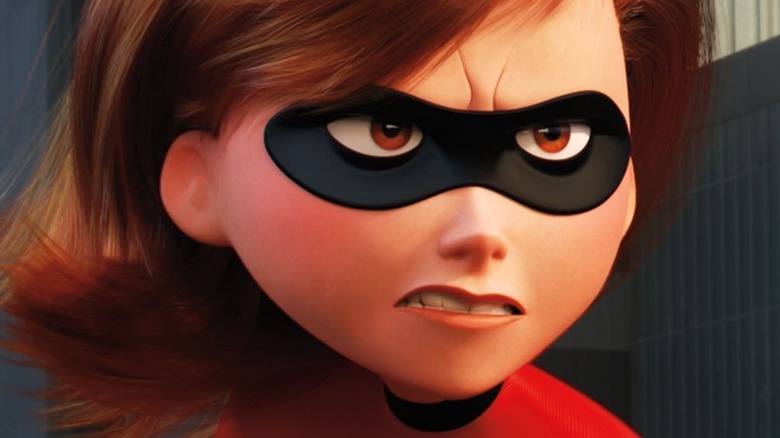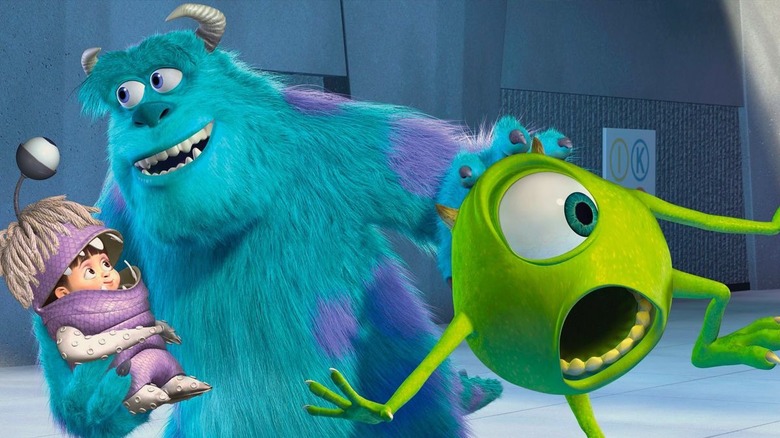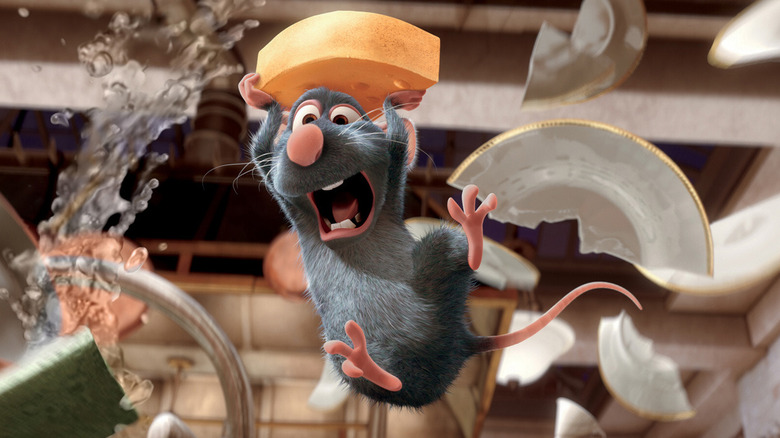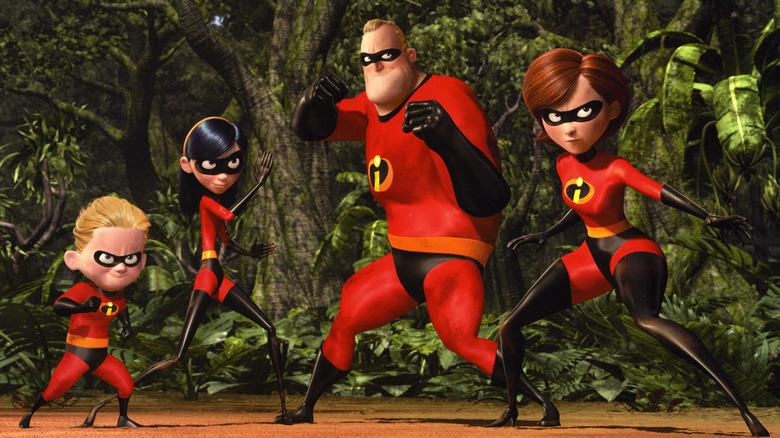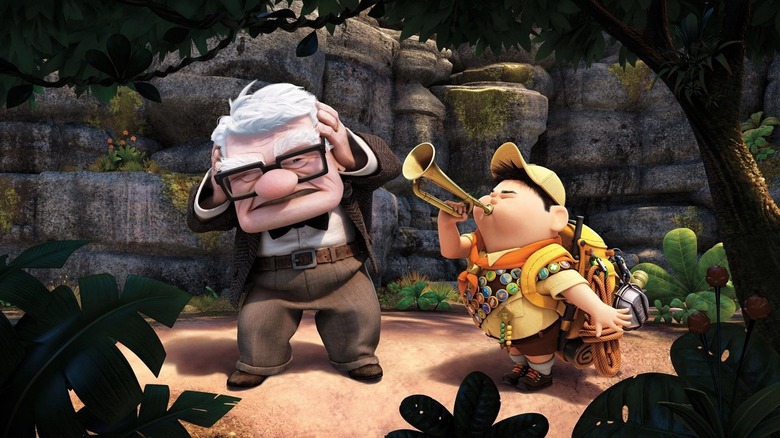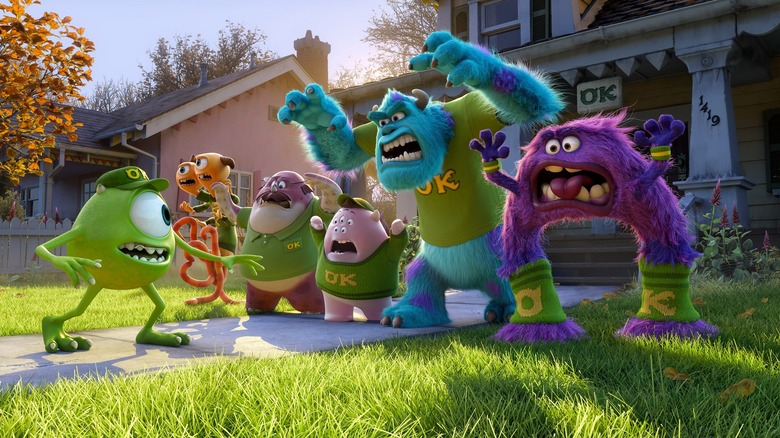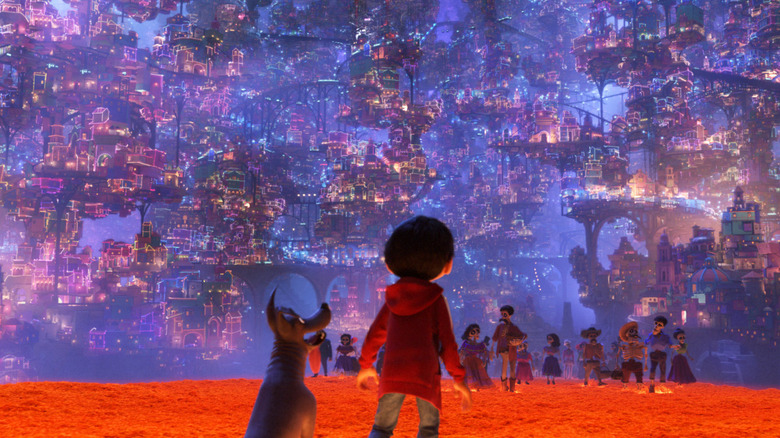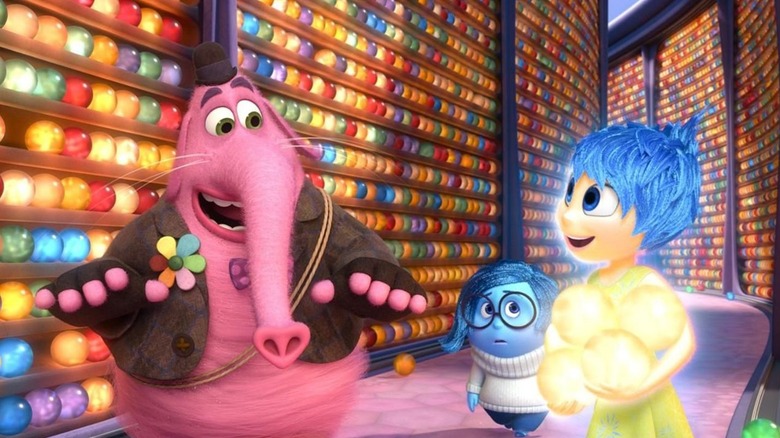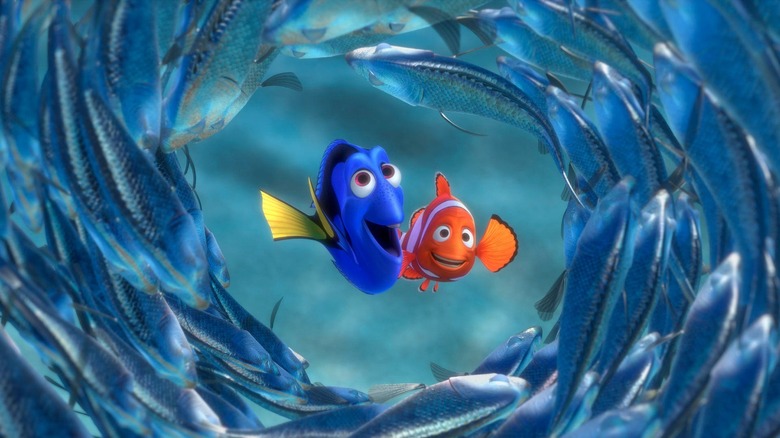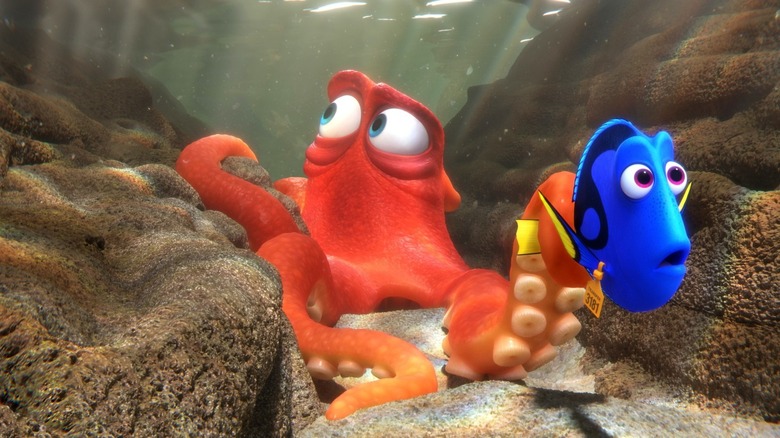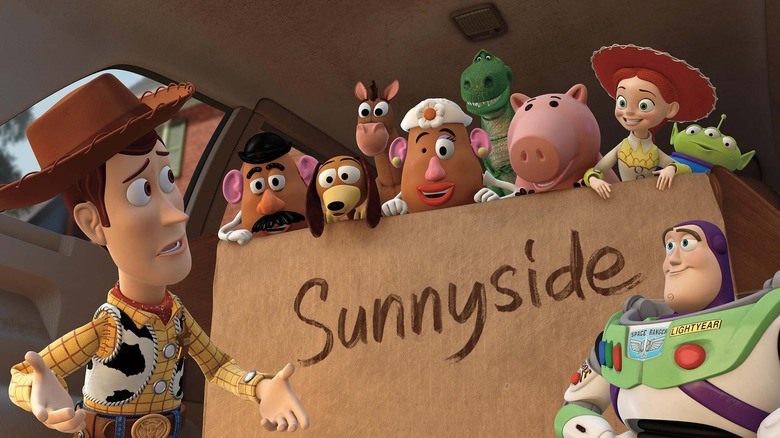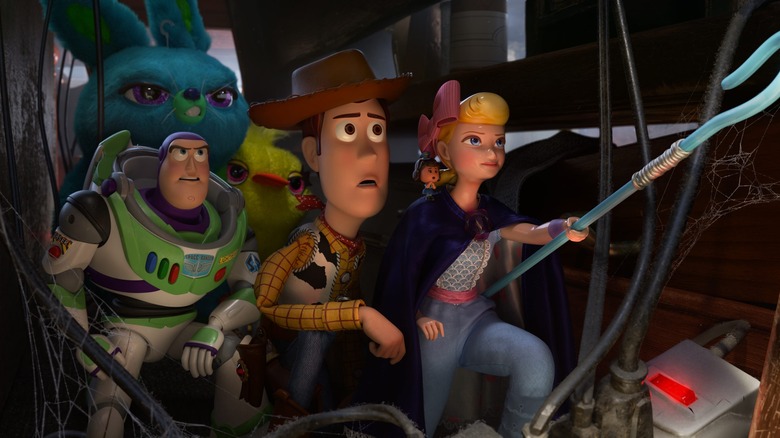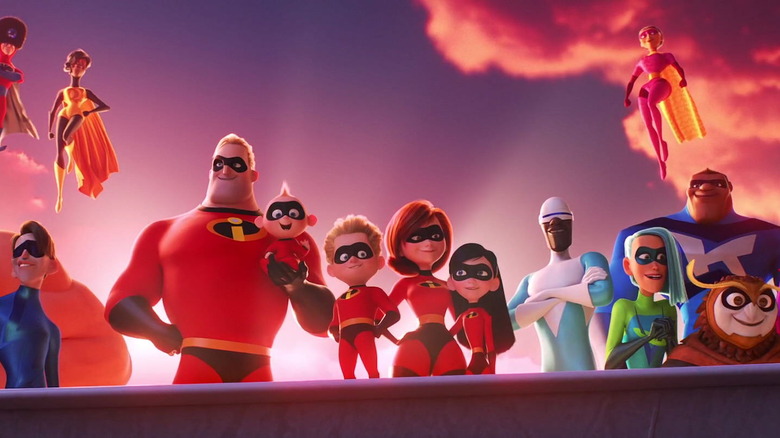The Biggest Pixar Movies Of All Time
Pixar is largely known for delivering animated family movies that garner critical acclaim and make adults cry at the drop of a hat. But Pixar has also become quite famous for its box office track record. Since "Toy Story" kicked off the studio's forays into feature-length storytelling, Pixar films have accumulated a staggering $14.6 billion at the worldwide box office. Included in that sum is a quartet of films that cracked $1+ billion globally, as well as a slew of endeavors that did significantly better than usual for original titles. Such are the feats of one of the most recognizable animation companies in the history of cinema.
However, breaking down the biggest Pixar movies of all-time worldwide, it becomes clear that it takes more than just the presence of a hopping lamp to get audiences to shell out money for a film ticket. These movies all had unique attributes that contributed to their respective achievements at the box office, whether that was their distinctive marketing, a perfect release date, or simply being a sequel to a particularly beloved entry in the studio's canon. Examining what exactly inspired the box office success of various Pixar releases is enough to make you truly appreciate why Pixar has garnered the sterling reputation that it has.
Monsters, Inc.
In a modern box office landscape where 10 different animated movies have managed to cross the $1 billion worldwide mark, it can be hard to imagine there was a point in time where these type of films struggled to clear $500 million, let alone $1 billion. But at the dawn of the 21st century, "The Lion King" stood tall as the only cartoon that had cleared half a billion. It would finally receive company with Pixar's 2001 feature "Monsters, Inc.," which debuted in November 2001 to stunning box office figures.
The monstrous movie earned $560.4 million worldwide – $50.2 million of which came from a 2012 digital 3D re-issue. This means that "Monsters, Inc." took in roughly $510 million in its original box office run, still enough to make it only the second cartoon movie in history to cross $500 million at the time. This gross also made "Monsters, Inc." the biggest animated movie of 2001, beating out "Shrek" for that honor. On top of everything else, this haul made "Monsters, Inc." the biggest Pixar movie released up to that point, beating out "Toy Story 2" for that honor.
All of these accomplishments were owed heavily to the strong reputation Pixar had cultivated, as well as the film's clever premise that contemplated what monsters did in their daily lives. Today, it's normal for animated films to score mammoth $500+ million grosses across the globe, and that status quo was partially established by "Monsters, Inc."
Ratatouille
With "Ratatouille," Pixar made their second movie (following "Finding Nemo") that largely took place outside of North America. By shifting the action to European locales and specifically Paris, France, this meant "Ratatouille" was always going to have an extra boost of appeal to international moviegoers. But just how much appeal remained uncertain prior to its release. After all, "Ratatouille" was coming out in the summer of 2007 against a deluge of big-budget sequels in the "Harry Potter," "Pirates of the Caribbean," and "Spider-Man" franchises. It'd be easy to imagine Remy and his ambitions of becoming a chef getting lost in the middle of all those movies.
However, "Ratatouille" ended up scoring big time at the box office with a sizeable $626.5 million total. More than two-thirds of that gross came from overseas territories, giving "Ratatouille," at the time, the second-biggest international box office haul for a Pixar title, only behind "Finding Nemo." The fact that the film was set in Paris, France, made its appeal to European moviegoers apparent, but the strong storytelling on display ensured that "Ratatouille" resonated with moviegoers all across the globe. And its mighty overseas performance was enough to make "Ratatouille" the sixth biggest movie of 2007 worldwide, an impressive achievement that put the film ahead of several blockbuster sequels. In the face of so much competition, this Parisian tale about how "anyone can cook" managed to deliver some scrumptious box office figures.
The Incredibles
At one point in "The Incredibles," superhero Bob Parr has to deal with his cantankerous boss — an employer who tells Mr. Incredible, "I'm not happy, Bob." But this grouchy sentiment certainly didn't apply to the folks back at Disney headquarters. Once the worldwide box office results came in for "The Incredibles," it's doubtful any Mouse House executives were feeling "not happy" about this 2004 Pixar title had fared.
Despite facing an avalanche of competition for family moviegoers in November 2004 from films ranging from "The Polar Express" to "National Treasure," "The Incredibles" scored $631.4 million worldwide. While a step down from the last Pixar movie, "Finding Nemo," that was about the biggest complaint you could have with this box office haul. For one thing, it was well ahead of the majority of animated films at the time, not to mention that it came in above many other live-action superhero features.
For example, all the "X-Men" movies released between 2000 and 2013 had lower worldwide grosses than this original superhero movie aimed at youngsters. These box office accomplishments were extra impressive considering that, with its all-human cast and action-heavy tone, "The Incredibles" was a departure from many past Pixar movies. One way it remained consistent with its predecessors, though, was in being a flat-out financial hit. No reason to be "not happy" about those numbers.
Up
Prior to its release, "Up" faced a lot of skepticism. Granted, several Pixar films have been doubted before they hit movie theaters, but this one especially seemed like it was doomed in many people's eyes. How was it going to work? A movie starring an old man? Would kids even want to see that? How could you make toys out of it? Turns out, though, plenty of people did want to see "Up." In fact, it became one of the studio's most impressive features at the worldwide box office.
Released in May 2009, "Up" grossed $731.4 million globally, which included a $293 million haul from domestic moviegoers. Turns out, having such a strange premise made "Up" immediately stand out to moviegoers. There was really nothing else like it in the field of family movies — and even just films in general. Plus, "Up" was the first major animated film of the summer and, at least domestically, didn't face any cartoon competition for over a month until "Ice Age: Dawn of the Dinosaurs" arrived.
It also didn't hurt that responses from moviegoers were extremely positive. Achieving an A+ CinemaScore from audiences, "Up" was inspiring impressively upbeat feedback even by the standards of Pixar features. Just the film's "Married Life" opening montage alone became instantly iconic. With a unique premise, a wide open summertime playing field, and all that euphoric word-of-mouth praise, "Up" went from being a question mark to one of Pixar's most impressive accomplishments.
Monsters University
In the summer of 2013, when most college students were resting between semesters, Pixar took audiences back to school. Specifically, they took moviegoers to "Monsters University," a prequel showing how "Monsters, Inc." protagonists Mike and Sulley met during their college days. This was only the fourth sequel in the studio's canon, and two of those prior follow-ups had managed to crack $500 million worldwide. "Toy Story 3" even went so far as to cross $1 billion in its global theatrical run, setting high box office expectations for all future Pixar sequels.
While "Monsters University" didn't hit $1 billion worldwide, it still amassed an impressive $743.4 million, a noticeable improvement on its predecessor's box office gross. Best of all, at the time, it was the third biggest Pixar movie ever released. The goodwill generated from the original "Monsters, Inc." had simmered and endured in the 11 years between that film and "Monsters University." With that kind of positive response, any follow-up would inevitably have some level of success, but "Monsters University" went the extra mile of engaging in clever marketing techniques to draw the attention of moviegoers, like doing "recruitment advertisements" for the film's titular institution.
Rather than solely relying on the nostalgia attached to the first film, "Monsters University" created distinct new ways of connecting with potential audience members. As a result, it proved to be a hit, even though seeing "Monsters University" entailed going to college during the summertime.
Coco
While Pixar's four biggest movies of all time are sequels, it's worth mentioning that the studio's original titles are just as capable of being worldwide sensations as the franchise pictures. After all, a whopping half of Pixar's 10 highest-grossing films are original features. Among that crop of non-sequels is "Coco," Pixar's journey into the Land of the Dead. The film made adults everywhere cry, got a bunch of catchy tunes stuck in people's heads, won two Academy Awards, and ended up grossing $798.2 million worldwide.
That included an impressive $210.4 million domestic total, but where "Coco" really shined was in foreign territories. In Mexico, the production made a whopping $57.6 million, enough to become the highest-grossing film ever released in the country. Even more impressive was its run in China, which saw "Coco" grossing $177.8 million. That's by far the biggest haul ever for a Pixar film playing in China. Pixar movies have largely struggled to gain much traction in this market. However, "Coco" just resonated with audiences around the globe, and in the process, it became a Chinese box office juggernaut. With all these impressive financial feats under its belt, "Coco" had an incredible box office run that proves what happens when you commit to original storytelling.
Inside Out
We all have emotions. No matter where you live in the world, we all experience some form of joy, sadness, anger, and every feeling in between. Maybe that's why "Inside Out" managed to become such a box office powerhouse in its global theatrical run. Its plot may have seemed, from afar, too weird and out-there to be universal. But every moviegoer on Earth has thought about what goes on inside their own head. Thus, the premise of "Inside Out" was highly accessible, rather than a turn-off.
This meant "Inside Out" always had the capacity to be a hit, but who knew it would be this lucrative? Grossing $855 million worldwide, "Inside Out" managed to emerge as the seventh biggest movie of 2015. That's an extra impressive feat given that the film came out only one week after the record-shattering blockbuster "Jurassic World." Turns out, though, there was room for both dinosaurs and emotions in movie theaters in 2015, as "Inside Out" flourished financially despite all the competition. This included a $356.4 million domestic total, which is still the biggest North American cume for an original Pixar feature. Through this kind of enormous box office, seeing "Inside Out" in a theater turned out to be nearly as widespread of an experience as actually having emotions!
Finding Nemo
With "Finding Nemo," Pixar was going where none of its films had gone before: summertime. The first four titles from this outfit had been released in November, a timeframe that had served those films well. But now, Pixar would be launching a feature in late May, a period usually dominated by action-packed blockbusters. Could a G-rated title about a clownfish hunting for his son thrive in the face of all those movies? The answer would turn out to be a hearty "yes."
In its worldwide box office run, "Finding Nemo" grossed $936 million, a number boosted by figures accumulated in its 2012 theatrical digital 3D re-issue. Even removing those numbers, though, "Finding Nemo" amassed an impressive stack of cash. In fact, two months into its initial release, "Finding Nemo" made history by becoming the biggest animated film at the time. It was a feat aided by the fact that "Finding Nemo" played over summer weekdays, when kids were out of school and were more likely to go to the movie theater. However, it was also the fact that the film was simply generating the kind of word-of-mouth that doesn't come around every day. "Finding Nemo" launched in a timeframe that Pixar was unfamiliar with in 2003, but it excelled because of good, old-fashioned storytelling.
Finding Dory
After more than a decade, moviegoers finally got reunited with the underwater cast of "Finding Nemo" through the blockbuster follow-up "Finding Dory." This time, though, the spotlight shifted from the adolescent Nemo to the forgetful Dory. While the original "Finding Nemo" entered theaters a small fish in a big pond, "Finding Dory" was the kind of highly anticipated blockbuster the initial film was competing against. A risky original idea had become a juggernaut franchise by 2016, and that meant exceptional box office results were inevitable.
But "Finding Dory" made sure to not rest on its laurels when it came to its marketing campaign, and it emphasized in posters and trailers a whole slew of new aquatic critters for audiences to identify with. The promise of something new rather than just a rehash of the original "Nemo" helped ensure that "Finding Dory" would have no trouble attracting moviegoers in its summer 2016 theatrical run. Plus, it helped that the sequel shifted focus to beloved side character Dory. All of these ingredients resulted in a remarkable box office run as "Finding Dory" amassed a whopping $1.025 billion worldwide. Included in that sum is a $486.2 million domestic gross, which made "Finding Dory" the highest-grossing animated film in North America at that point, dethroning "Shrek 2" for that honor. Like many Pixar sequels, "Finding Dory" took its sweet time getting to theaters, but the tremendous box office results indicate audiences thought the wait was well worth it.
Toy Story 3
Between 2010 and 2019, Pixar released seven sequels to various films in their catalogue. By contrast, in their first 14 years as a studio, the only sequel to be found was "Toy Story 2." There was a time when Pixar follow-ups were scarce, and "Toy Story 3" came in at the end of that era. Released just before "Cars 2" and "Monsters University" normalized franchise pictures for the outfit, "Toy Story 3" was seen as something special. Rather than just another animated cash grab, this was perceived as a long-awaited return to the world of Woody, Buzz, and friends.
More than a decade between "Toy Story" installments helped make the passage of time in-universe feel all the more emotionally potent. Attracting audiences with poignancy — as well as a familiar brand — "Toy Story 3" landed in movie theaters in June 2010 and proceeded to become a box office sensation. Grossing $1.068 billion worldwide, "Toy Story 3" was the first animated film in history to crack the $1 billion threshold. It also more than doubled the worldwide gross of "Toy Story 2" from 1999. While some franchise threequels reflect a series in serious box office decline, "Toy Story 3" proved that the "Toy Story" saga was just as attractive as ever to moviegoers.
Toy Story 4
The year 2019 was a big one for Disney at the worldwide box office. The company grossed a record high of $11.1 billion globally and looking over their various titles in the year, it's not surprising they hit such an enormous figure. "Avengers: Endgame" dethroned "Avatar" to become the biggest movie all time. "Aladdin" drastically overperformed while "Frozen II" and the remake of "The Lion King" both became two of the biggest animated movies ever made. Plus, "Toy Story 4" made an impressive impact on the box office landscape. Dropping nine years after its predecessor, "Toy Story 4" showed that, even after being around for nearly 25 years, these plastic playthings were just as lucrative as ever.
The theatrical launch of "Toy Story 4" was preceded with a marketing campaign that emphasized the presence of new characters, particularly a paranoid spork named Forky. It was a clever way to make sure audiences knew there would be plenty of new characters on display here, as opposed to the filmmakers just playing with older, worn-out toys. It also proved to be a great way to generate impressive box office results if "Toy Story 4's" $1.073 billion worldwide box office haul is any indication. This made "Toy Story 4" the highest-grossing installment in the entire franchise. Even in a year packed with hits for Disney like 2019, "Toy Story 4's" box office glory still stands out as particularly noteworthy.
Incredibles 2
It was a common fact for over a decade that people wanted another "Incredibles" adventure. And the cliffhanger ending of the first movie combined with how superheroes have always inhabited long-form serialized storytelling made it an inevitability that moviegoers would see another "Incredibles" film. However, even with years of waiting, few could've predicted exactly how gigantic "Incredibles 2" would end up being. This film didn't just perform like an average successful Pixar movie — it was performing more like a typical live-action juggernaut.
With $1.242 billion worldwide, "Incredibles 2" made almost twice as much as the original "Incredibles" and it far exceeded the worldwide grosses of all other Pixar movies. That sum also made the feature the fourth highest-grossing animated film in history, behind only the two "Frozen" films and the 2019 "Lion King" remake. "Incredibles 2" managed to knock it out of the park financially by being a cross section of two incredibly lucrative domains — animated family movies and superhero films. Plus, "Incredibles 2" functioned just fine as kid-friendly entertainment, but its thriller-action set pieces also made sure it could perform well as a general summertime blockbuster. Having this kind of crossover appeal, as well as all that bottled-up anticipation, ensured that it would achieve unprecedented box office glory for a Pixar title.
